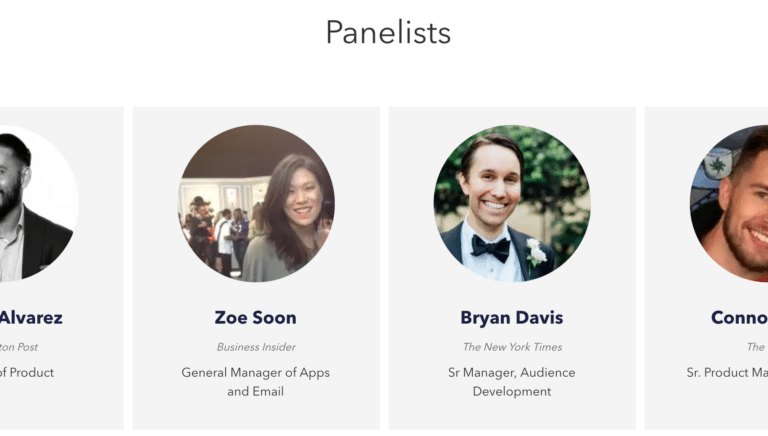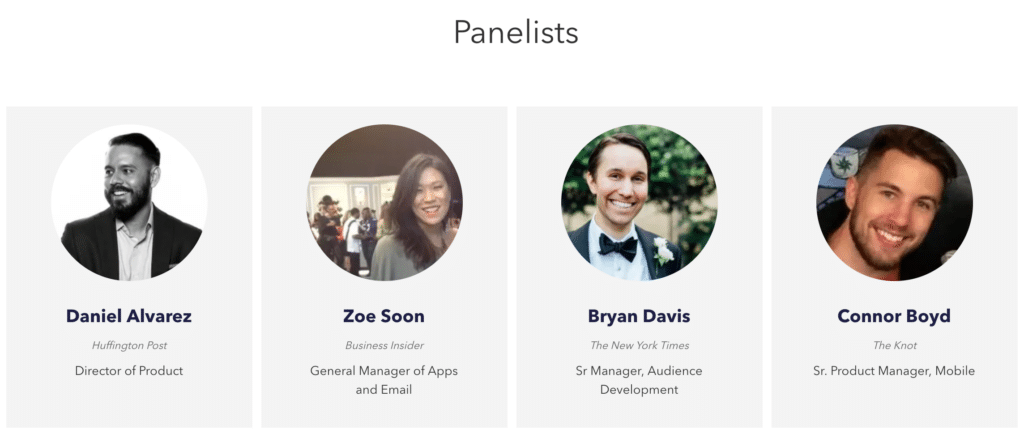Last week, we kicked November off with a Mobile Growth NYC Meetup featuring Daniel Alvarez of The Huffington Post, Conner Boyd of The Knot, Zoe Soon of Business Insider, and Bryan Davis of The New York Times—you could say, all in all, it was a newsworthy event!
We couldn’t be more pleased to share some of our favorite takeaways from the meetup. Special thanks to Daniel, Zoe, Bryan, Conner for sharing their insights, and to Work-Bench for hosting!
Daniel Alvarez, Director of Product @ The Huffington Post
- Be part of your daily users’ routine—the engagement will come.
- Don’t forget about optimizing the SEO of your app! It’s difficult to check every box to be sure your user is getting the best possible experience, but it must be done.
- For platforms you don’t prioritize—for example, iPad—be sure the user experience is good, but don’t feel you have to create features specific to that platform.
Zoe Soon, General Manager of Apps and Email @ Business Insider
- Instead of looking at newsletters as big lists to import, look at them as international love affairs. They peak, and then when you think they’re done, they peak again. Keep riding the peaks, and you can convert newsletter subscribers.
- The days of expecting people to come to you because of your brand are behind us.
- We came up with this great AI tool that was able to work out different relationships between entities and could do language recognition. We developed the product for it, and when we put it in front of users, it was great. But the usage wasn’t that great because there were no triggers for users to actually use it. … It’s cliché, but it’s more important than ever to ensure you’re solving a problem for your users, and that there’s a realistic trigger for them to access the solution.
Bryan Davis, Senior Manager of Audience Development @ The New York Times
- Mobile apps force us to consider performance metrics beyond, say, number of papers sold. When it fits into our subscription business, our app is a great opportunity to reach subscribers because it features all of the habits that we know increase the likelihood of paying for The New York Times—the number of visits to the app, the number of stories viewed, the article count.
- We do a lot of internal reporting to different stakeholders; we have some folks who want qualitative data, and others who want a dashboard. Google Data Studio is great for visualizations. It’s super easy to use.
- Optimize for a user’s potential purchase or upgrade from the very beginning of the relationship. Make sure you’re conveying the value of paid experiences in your app, and make sure you’re giving that the same prioritization that you’re giving the app itself.
Conner Boyd, Senior Product Manager @ The Knot
- Ask yourself the question, What problem am I solving for my user? But also ask, how is that problem being solved right now?
- Always consider whether there’s a switching cost involved with your product, and—if so—how you can mitigate that cost. Don’t forget about the competitors you have that have the budget to solve your business proposition quickly.
- In mobile growth, there are life style companies and life stage companies. For life style companies, optimize around tight, seamless funnel conversion. For life stage companies, optimize around acquisition early in the cycle and retention as users evolve through the stage.
Want to hear more from Zoe & Daniel? Head to San Francisco on December 4th & 5th for Branchout, our two-day event dedicated to overcoming mobile fragmentation, building optimal cross-platform experiences, and measuring ROI. Be sure to register soon—our Early Bird period ends November 15th!























